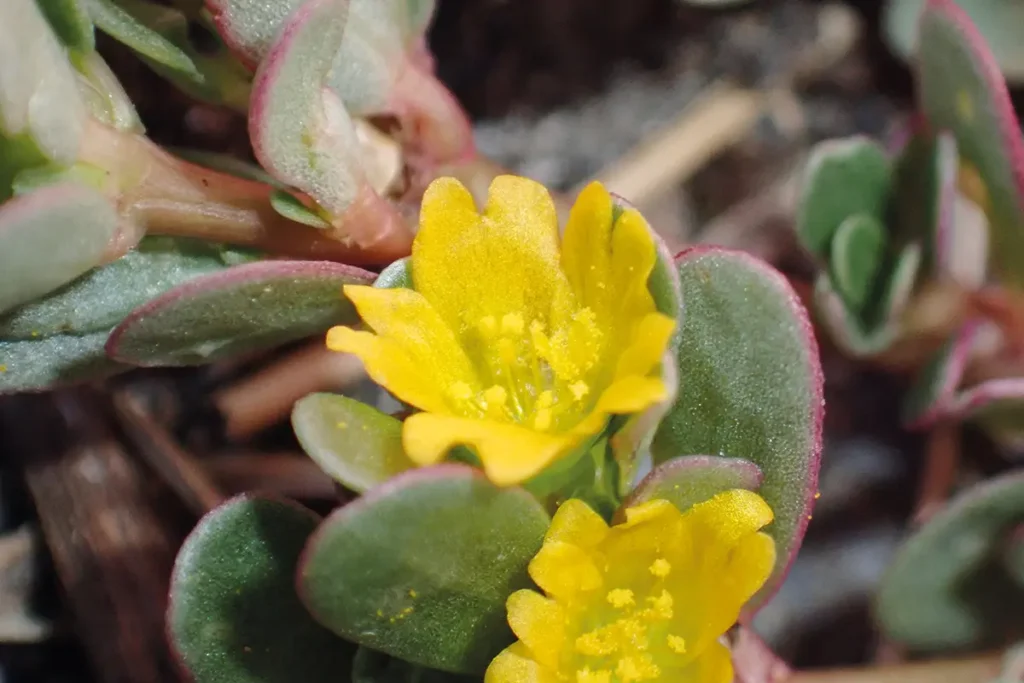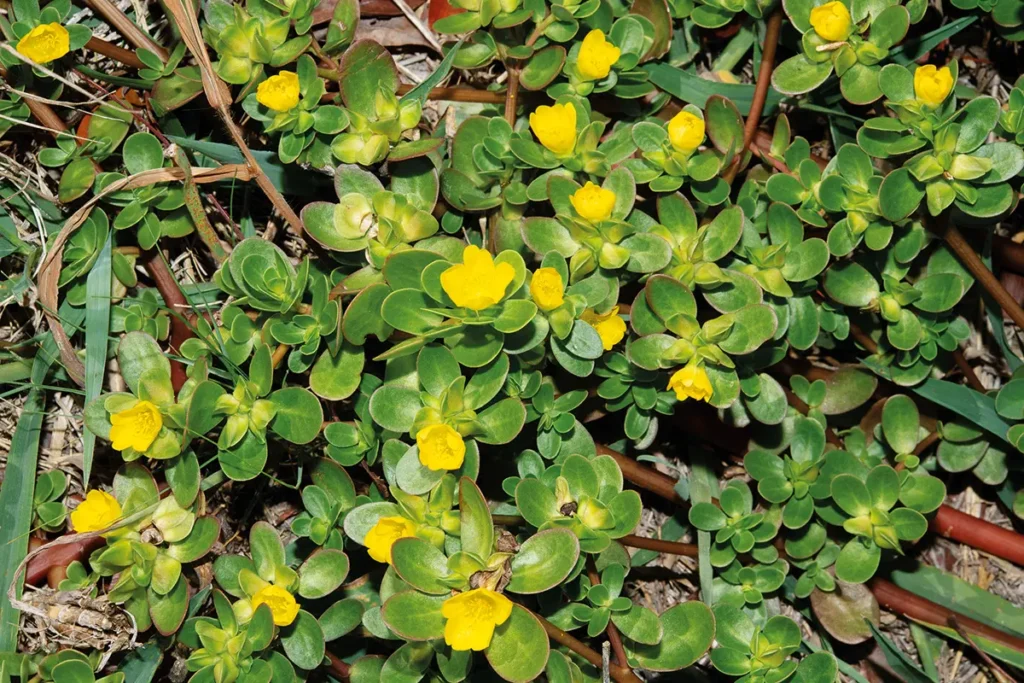


Nome Italiano: Portulaca
Nome scientifico: Portulaca oleracea L.
Nome Gallurese: Porcellana
Descrizione:
La portulaca è una erbacea spontanea annuale con fusti rossastri, carnosi e molto ramificati, sdraiati sul terreno. Le foglie, carnose e succose, hanno forma obovata. I fiori, piccoli e di colore giallo, sono inseriti all’ascella delle ramificazioni superiori. Cresce abbondante nei giardini e negli orti, comunque nella smossa e lavorata.
Proprietà e usi:
Negli ultimi anni è nato un grande interesse per questa pianta spontanea, considerata dai più un’erba infestante. Ricca di acidi grassi polinsaturi di tipo Omega 3, la portulaca è una fonte vegetale fondamentale per regolarizzarne il fabbisogno. Gli Omega 3 sono i grassi buoni che aiutano a ridurre il colesterolo e i trigliceridi e a prevenire diabete e malattie cardiovascolari. Una caratteristica è anche la sua ricchezza di mucillagine (circa il 40% sul peso secco), che è considerato un emolliente naturale. Per questo motivo si può utilizzare per realizzare impacchi per curare acne e eczemi, pelle arrossata e punture di insetti. Presenta un’alta quantità di Vitamina C e in passato veniva usata per contrastare lo scorbuto e le infezioni alle vie urinarie. Contiene, altresì, molte vitamine A e del gruppo B.
Curiosità e miti:
Nel Seicento i cuochi di Carlo II (che non doveva mai mancare dagli orti e nei giardini) l’aggiungevano alle insalate, talvolta mescolando le sue giovani foglie tagliuzzate con quantità doppia di lattuga, fiori di borragine e petali di calendula, per condire il tutto con olio e succo di limone. Veniva usata anche insieme ai pomodori crudi, patate lesse e cipolle. Bene anche bollita e in frittate di uova o fritta in pastella. Ottima aggiunta a minestre, brodi, salse e vellutate.
Dal punto di vista organolettico è sicuramente più saporita delle abituali insalate, quasi prive di sapore e scarse di proprietà. Ma attenzione, tra l’alto clero, preti e monaci, curiosamente la ritenevano “anafrodisiaca”, facendo parte dei “quattro semi freddi” (cicoria, lattuga, indivia, portulaca).

Italian name: Portulaca
Scientific name: Portulaca oleracea L.
Gallurese name: Porcellana
Description:
Purslane is a wild annual herbaceous plant with reddish, fleshy, highly branched stems lying on the ground. The fleshy, juicy leaves are obovate in shape. The small, yellow flowers are inserted at the axils of the upper branches. It grows abundantly in gardens and allotments, however in the loose and tilled.
Properties and uses:
In recent years, great interest has arisen in this wild plant, considered by most to be a weed. Rich in Omega 3-type polyunsaturated fatty acids, purslane is an essential plant source for regulating requirements. Omega 3s are the good fats that help reduce cholesterol and triglycerides and prevent diabetes and cardiovascular disease. One characteristic is also its richness in mucilage (about 40 per cent of dry weight), which is considered a natural emollient. This is why it can be used to make compresses to treat acne and eczema, reddened skin and insect bites. It has a high amount of Vitamin C and was used in the past to fight scurvy and urinary tract infections. It also contains many vitamins A and B vitamins.
Curiosities and myths:
In the 17th century, the cooks of Charles II (who was never to be absent from gardens and vegetable gardens) added it to salads, sometimes mixing its shredded young leaves with double the quantity of lettuce, borage flowers and marigold petals, and dressing it with oil and lemon juice. It was also used together with raw tomatoes, boiled potatoes and onions. Also good boiled and in egg omelettes or fried in batter. Excellent added to soups, broths, sauces and creams.
From an organoleptic point of view, it is certainly tastier than the usual salads, which are almost flavourless and lacking in properties. But beware, among the high clergy, priests and monks curiously considered it ‘anaphrodisiac’, being one of the ‘four cold seeds’ (chicory, lettuce, endive, purslane).
